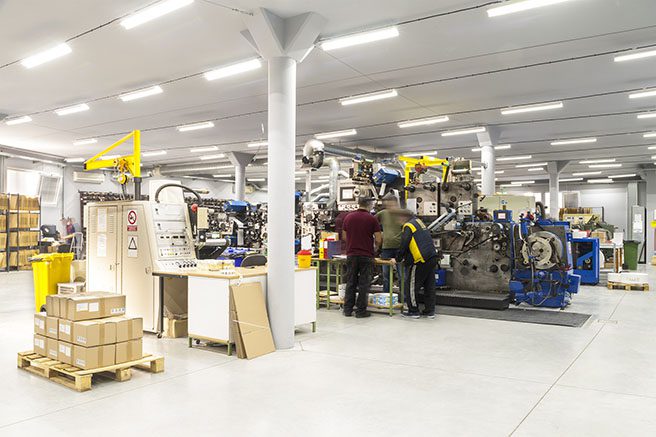Helping innovative entities realise their worth
The client
Australian designers and manufacturers of AV, education, data, electrical and sheet metal products for over 50 years.
The challenge
Assess the company’s business processes and projects to assess eligibility for R&D Tax Incentive.
William Buck’s solutions
- Identification of eligible R&D projects;
- Streamlining of process;
- Maximisation of R&D Tax Incentive claims.
Engineering locally made, high-quality audio-visual and storage equipment has been ‘business as usual’ for an entity for more than five decades. To discover their business qualified for the Research & Development (R&D) Tax Incentive was a pleasant surprise, one which means they can continue to invest even more in improving their specialised designs.
Like many sheet metal manufacturers, they provided custom-designed solutions for applications, as well as off-the-shelf products. Improving their products to be stronger, safer and more efficient is an ongoing process in their business practice, so it’s easy to overlook R&D when it’s simply second nature to them.
In conversations regarding their product development program, the company’s advisor at William Buck, identified the potential for an R&D Tax Incentive claim. Our R&D team then assessed the company’s business processes and projects and found it met the eligibility criteria of the R&D Tax Incentive program, enabling them to receive a sizeable R&D claim.
Now an entity who had always worked on improving their products to maintain a high standard of quality, could direct more resources to their R&D program knowing that they were eligible for R&D benefits.
So, what constitutes R&D? And how would you know if you are carrying out R&D in your business?
Simplistically, an eligible R&D activity is an activity that requires experimentation to solve a technical challenge and to generate new knowledge. Possible indicators of R&D activities include:
- Developing new or improving existing products;
- Developing or improving processes (e.g. to improve efficiencies or energy output, remove bottlenecks, etc.)
- Using plant or equipment in a new way other than how it’s intended to be used
- Developing new or improved IT systems or software, requiring – for example – the development of complex and unknown algorithms. Systems or software may be operational. E.g. to control or aid manufacturing or logistics processes or equipment or customer-facing; e.g. for sales and ordering, or a software solution of any type that is saleable/licensed).
The ‘pub test’ to determine if an eligible R&D activity has occurred is to answer ‘yes’ to all the questions below:
- Did you overcome a technical challenge when developing products, process or software?
- Did you need to conduct a trial or experiment to investigate an outcome?
- Were you uncertain whether the trial or experiment would produce your intended outcome?
- Did the R&D activity create new knowledge?
If existing knowledge was utilised to develop a new product or no true technical challenges existed, i.e. designers were confident in the new design and were certain it would work without the need for testing) then those products would be excluded from the R&D claim.
Some examples of eligible R&D activities undertaken by the manufacturing company included the design and development of:
- Storage cabinets with manganese-plating lining the locking mechanism, allowing for greater security;
- A knockdown enclosure with shelves capable of supporting large loads, where each shelf is capable of holding more than 300 kilograms;
- Various prototypes of new products that qualified for R&D.
Claimable expenses for R&D cover almost all aspects of carrying out R&D and can, therefore, add up to a considerable amount to be claimed. These may include:
- Contractors and consultants;
- Salaries and bonuses paid to staff plus on-costs;
- Any relevant direct costs (tooling, travel, materials used, software/IP licences, etc);
- A portion of company overheads such as utilities, rent, security, cost of various consumables, or anything that has a direct nexus to the R&D activity;
- Depreciation of tangible assets such as machinery and capital equipment used in R&D;
- Trial costs if not captured in the categories above.
William Buck’s R&D team assists in identification of eligible R&D projects, streamlining the process and maximising R&D Tax Incentive claims, so that companies can focus on developing the ideas and products and processes that Australia (and the world) needs.
If you believe your business may have activities that could qualify for the R&D Tax Incentive, or if you would like to know more, then please get in contact with William Buck for a free consultation.
















